Morning work plays a crucial role in my 3rd and 4th grade classroom. It’s what I use for a daily spiral review in math and language arts. Since I’ve been implementing my morning work routine, I’ve seen a significant improvement in students’ overall retention of skills. That retention of skills has reflected in an substantial increase in students’ test scores.
I teach at a school where students trickle in the classroom from 7:20-7:45, so I usually have a lot of students at school almost 30 minutes before our tardy bell rings. I’ve done all types of things for morning work: DOL, Accelerated Math, Mountain Language, Mountain Math, independent reading, creative writing….you name it. I’ve now consolidated my morning work into three essential components.
Morning Work Binder
All of my students’ morning work is kept in their morning work binder. The binder contains our Weekly Word Problems, Number of the Day, and Language Arts Morning Work. I use dividers to break the binder into three sections. This makes it easier for students to access their materials. Each of the morning work activities are short enough that students who arrive right when the bell rings have time to finish their work before we go over it together in class.
Morning Work-Weekly Word Problems
Morning Work-Number of the Day
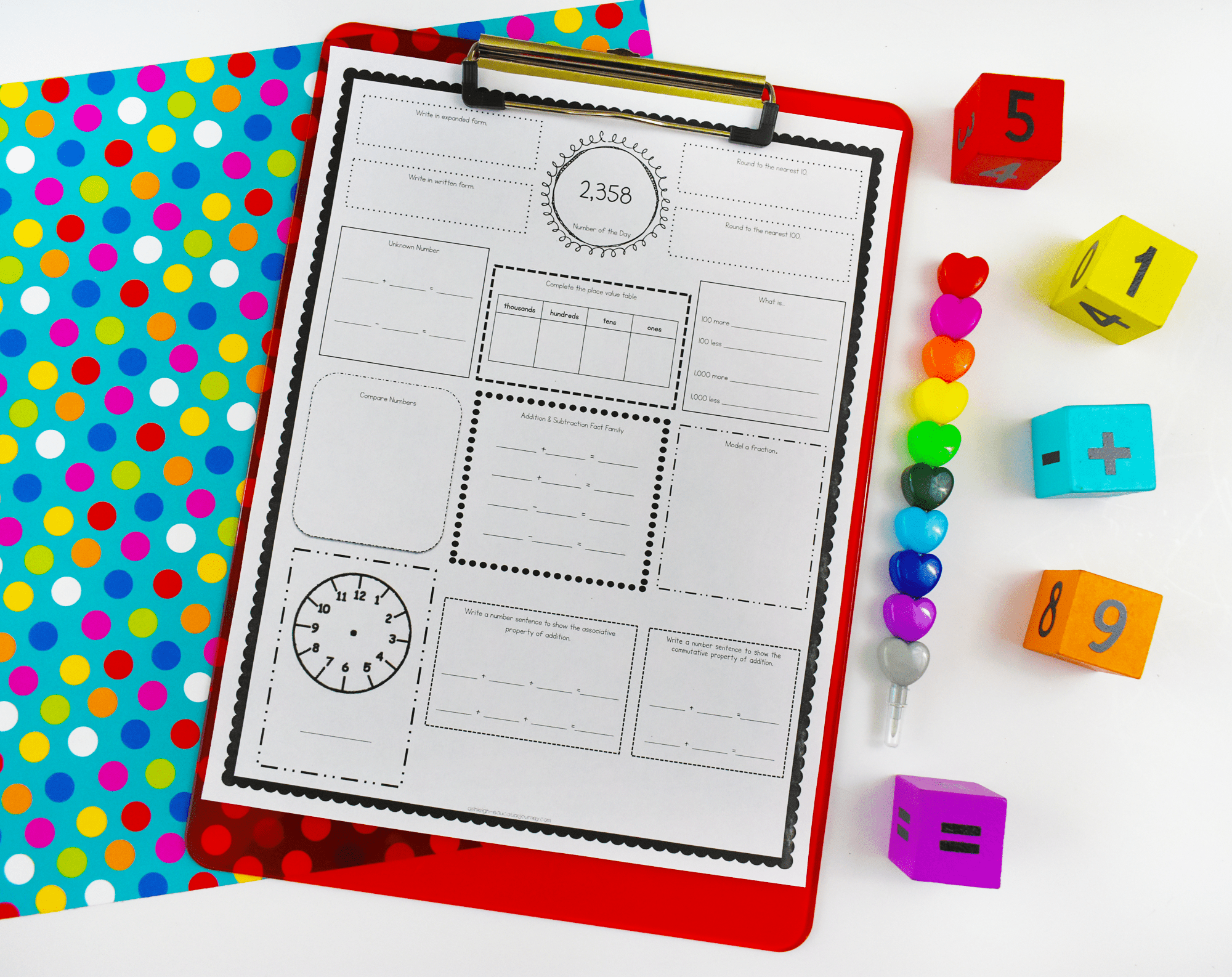

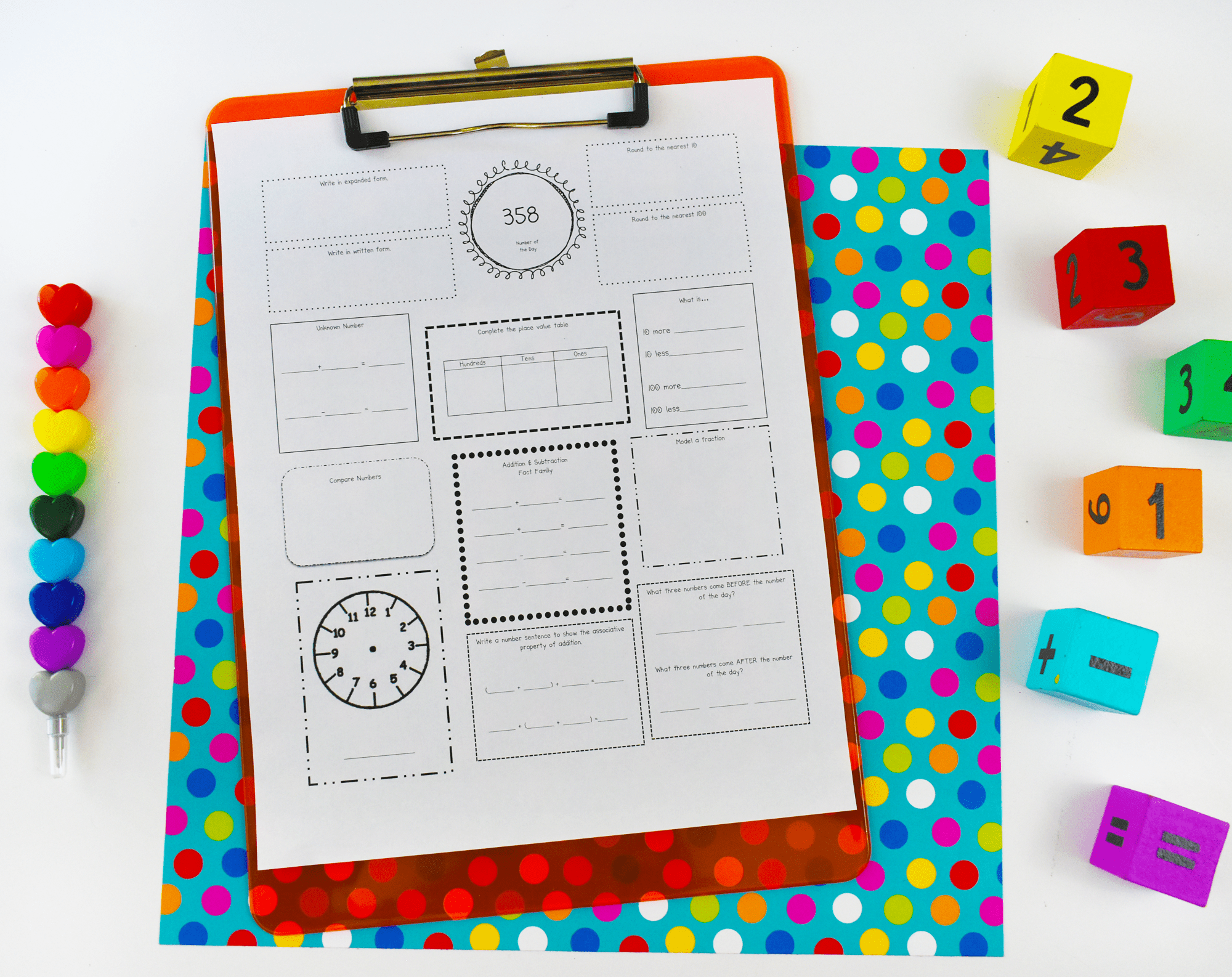
The fourth grade version contains 6-digit numbers, and students write the numbers in expanded form, expanded notation, and written form. They also round the number to the nearest ten, hundred, and thousand. Students write the multiples of the last digit of the Number of the Day through 100. They also list the factors, circle the prime numbers, and highlight the composite numbers. Students determine what is ten times, one hundred times, and one thousand times greater than the last number made by the last three digits of the number of the day. There is a divisibility table, and students circle any number the Number of the Day is divisible by. There is also an addition and subtraction problem, as well as a multiplication and division problems students solve with partial product/partial quotient and an area model.
Fraction of the Day
Since I love my Number of the Day so much, I also created a Fraction of the Day I use in place of my Number of the Day for our morning work. I do not use this review until I have completed my fraction instruction, because I don’t want it to take the place of conceptual, hands-on lessons. There are three different versions in the Fraction of the Day.
In the third grade version, students write the Fraction of the Day in written form and determine how many more parts are needed to make a whole. Students represent the fraction with an area model and number line. They also write two fractions with similar numerators and two fractions with similar denominators that are greater than the Fraction of the Day. Students repeat the steps with fractions that are less than the Fraction of the Day. Students also decompose the fraction into unit fractions and write two equivalent fractions.
In the fourth grade version, students use repeated addition to show how to multiply the Fraction of the Day by a given whole number. They also identify the next three multiples of the Fraction of the Day. Students add and subtract the Fraction of the Day from a given fraction and identify the missing number in a multiplication equation where a whole number, multiplied by the missing fraction, equals a given fraction. Then, students decompose the fraction into unit fractions and write two equivalent fractions.
In the fifth grade version, students convert the Fraction of the Day to a mixed number and model the Fraction of the Day. They add and subtract and multiply using fractions. Students divide the unit fraction of the Fraction of the Day by a given whole number and divide a given whole number by the unit fraction of the Fraction of the Day. Finally, students write two equivalent fractions.
Language Arts
The last section of our morning work is a language arts review. Each page is organized by the days of the week. This is a great way to reinforce and review all of those tricky grammar and vocabulary skills. Each version is specific to either 3rd or 4th grade standards. Students complete the language arts morning work independently, and we go over it together. I don’t give a grade on the assignment or for completion, but I do hold students accountable for completion. I broke this into two separate resources with a Third Grade Language Arts Morning Work and a Fourth Grade Language Arts Morning Work product. In each set, there are 36 weeks of questions.
Each of these files EXCEPT THE FRACTION OF THE DAY are included in my Morning Work Bundle. The bundles save you over 20% from purchasing each file individually!
Over the years, my morning work has adapted to meet the changing needs of my students. In fact, I implement these ideas along with a SOFT START morning work concept. You can read more about soft starts here.

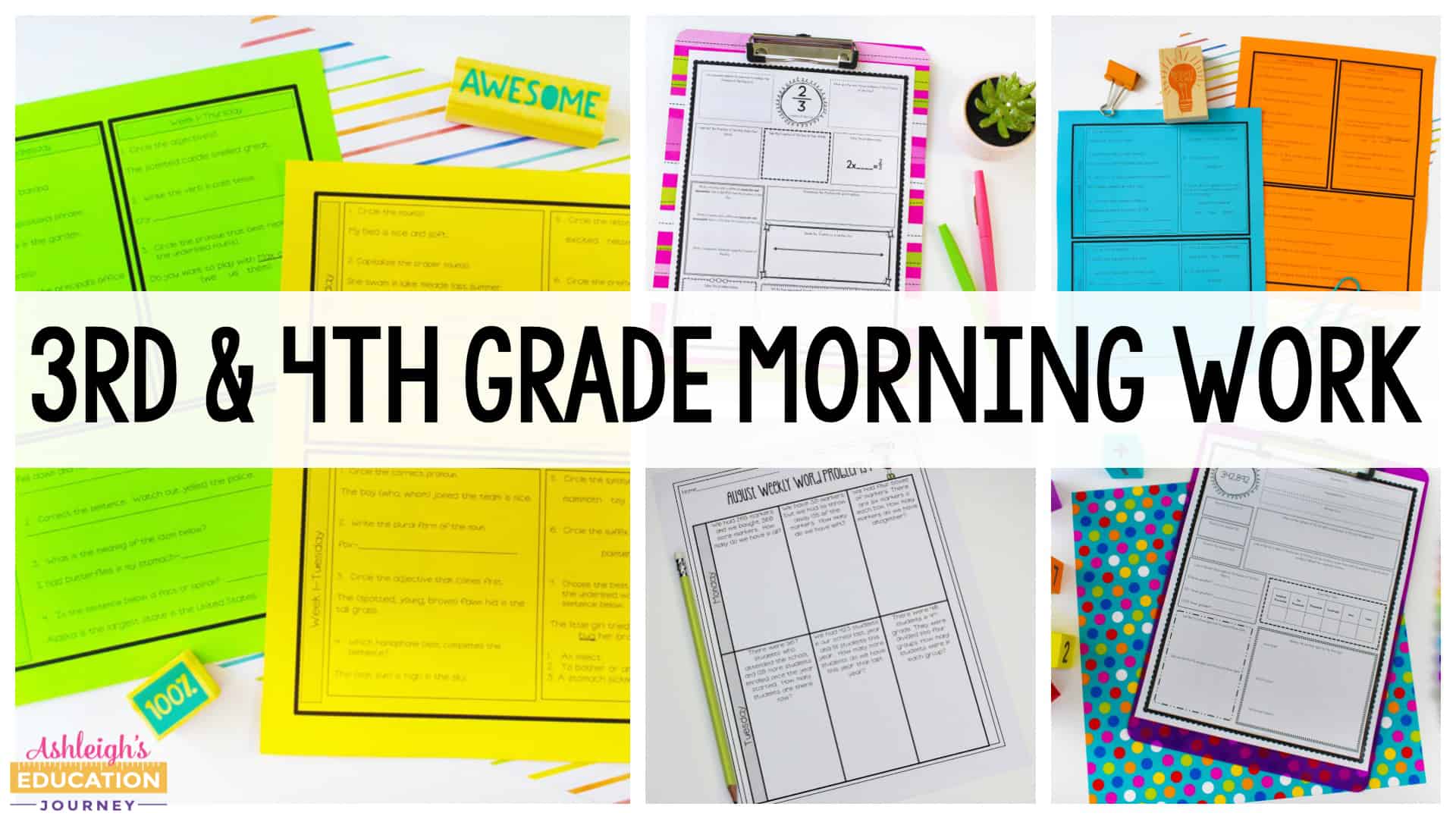
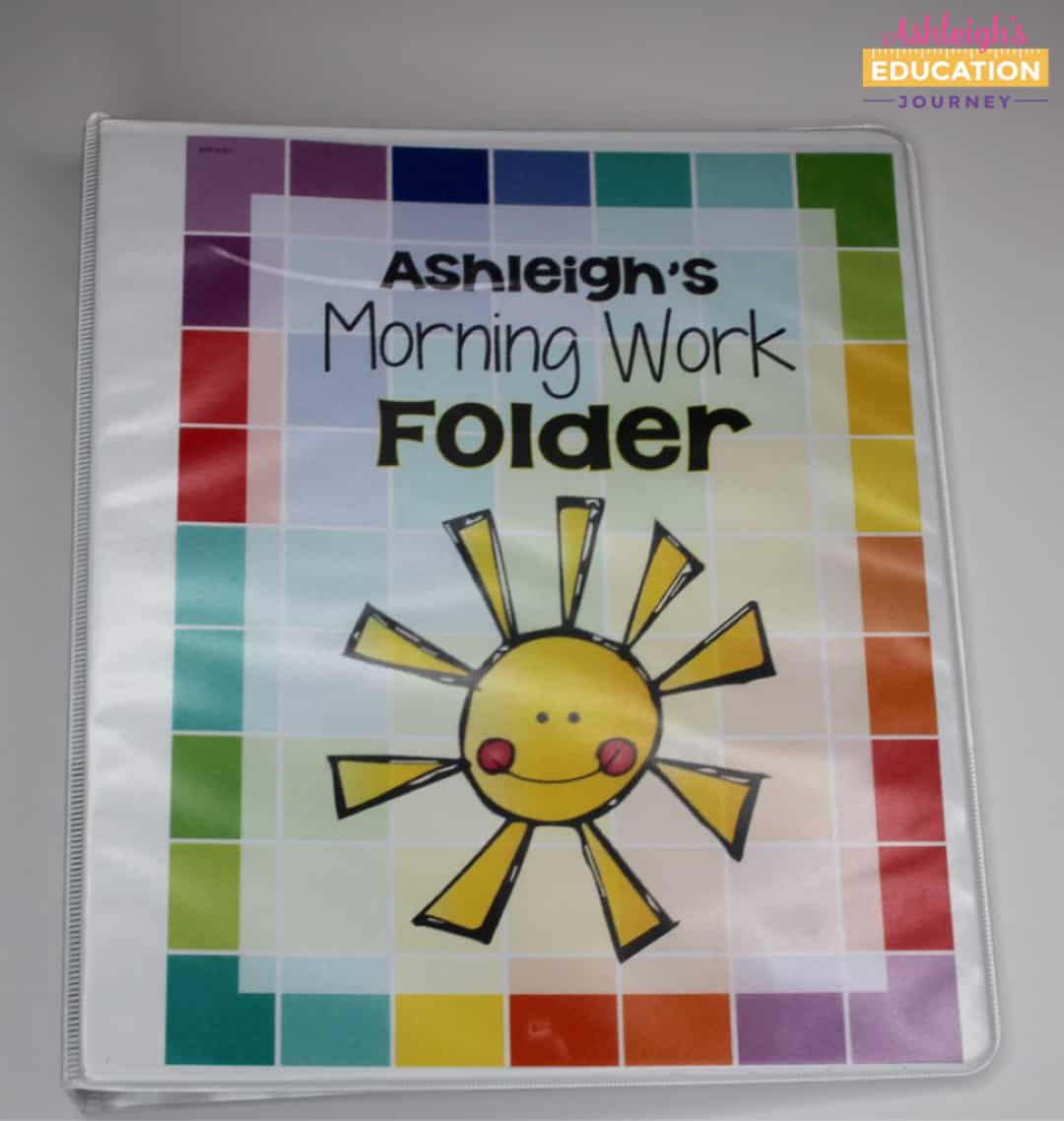
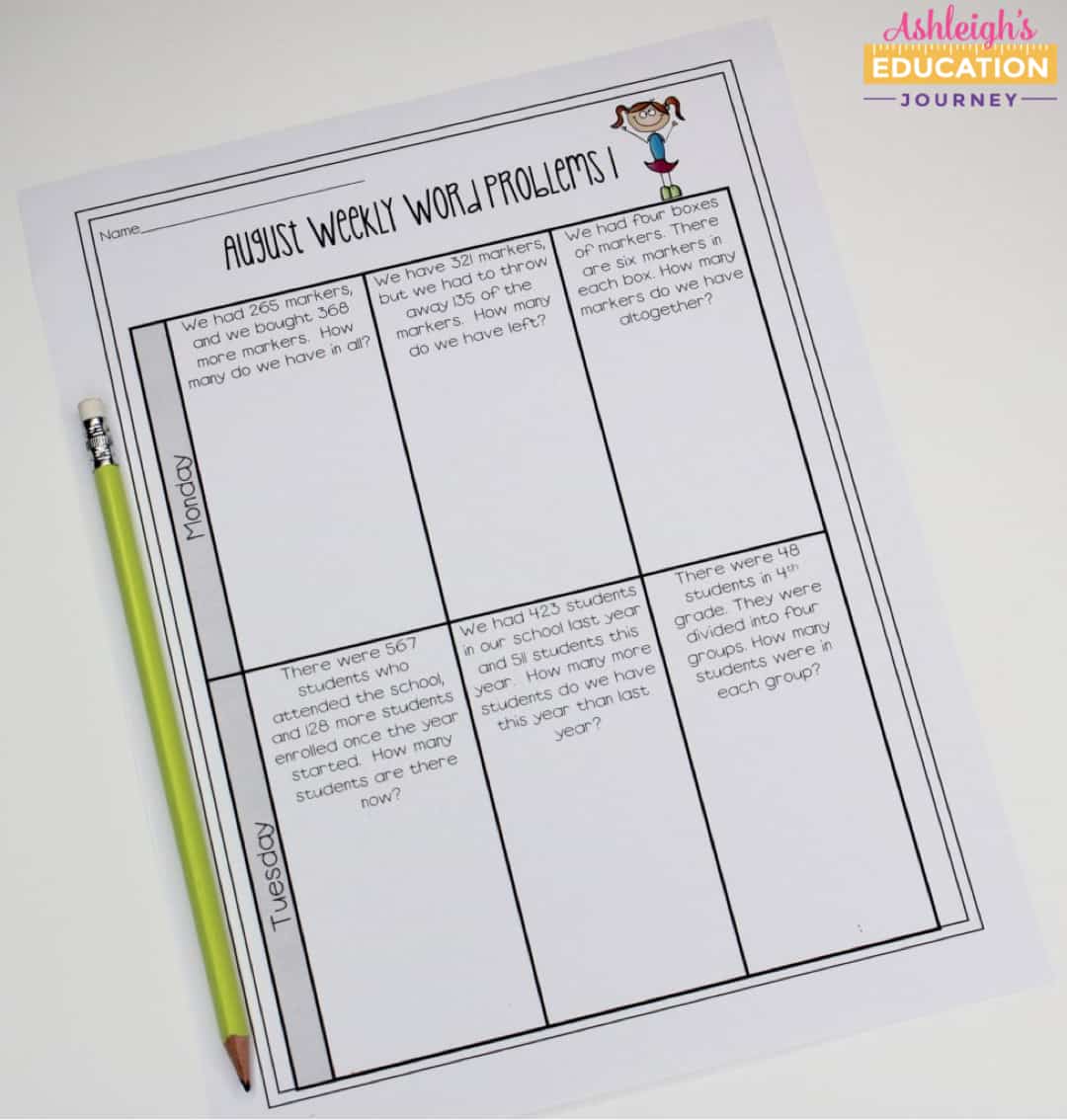
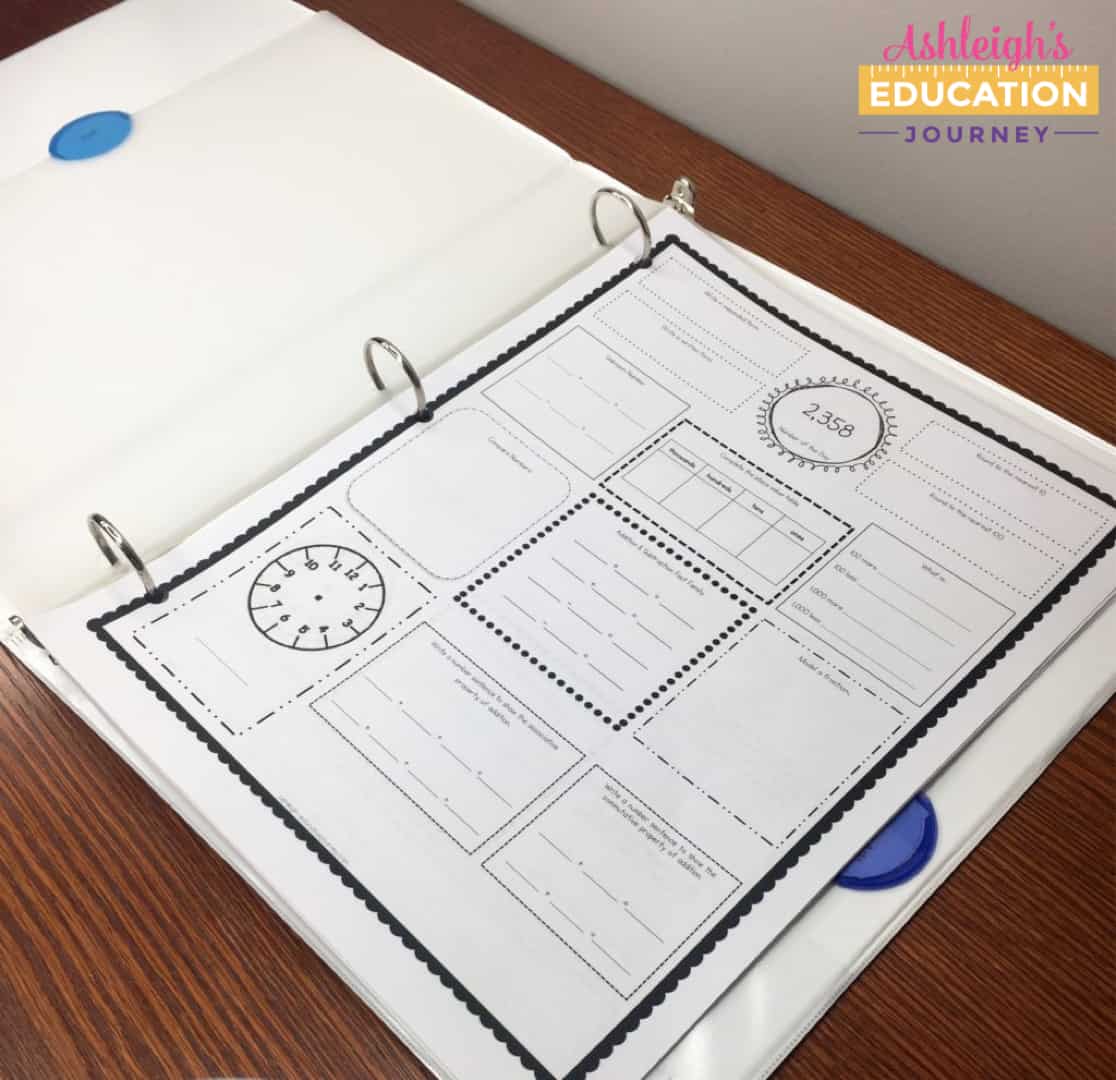
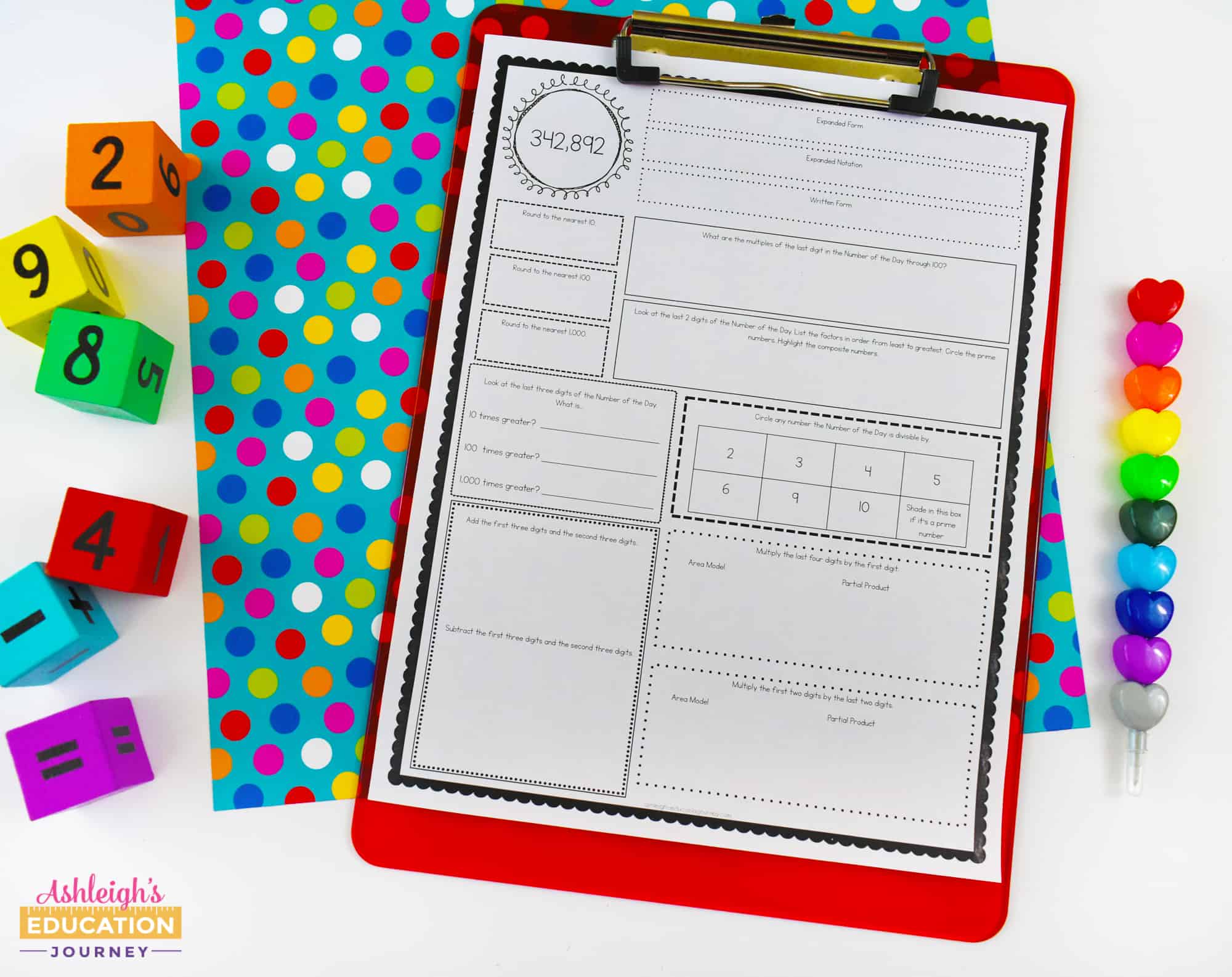
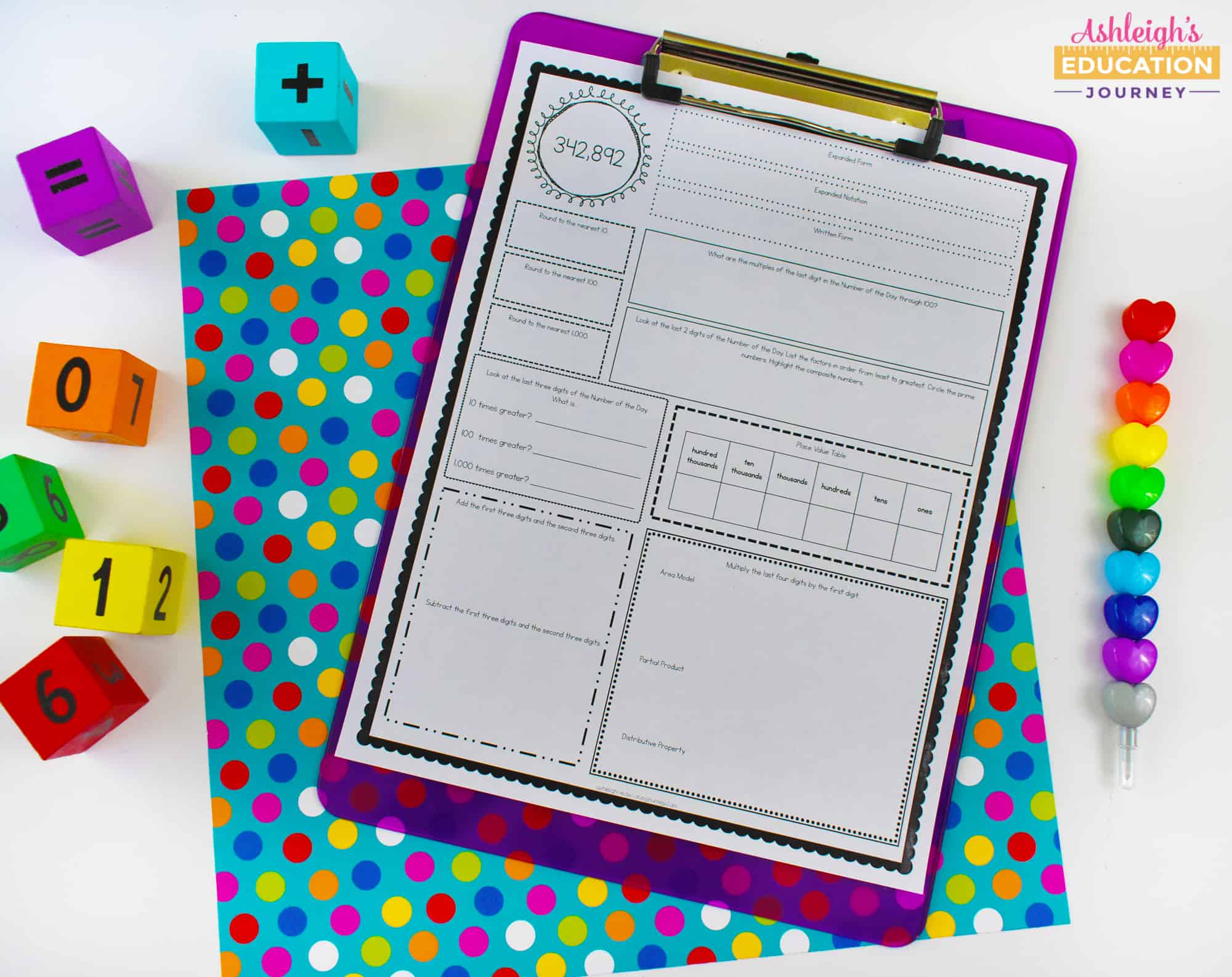
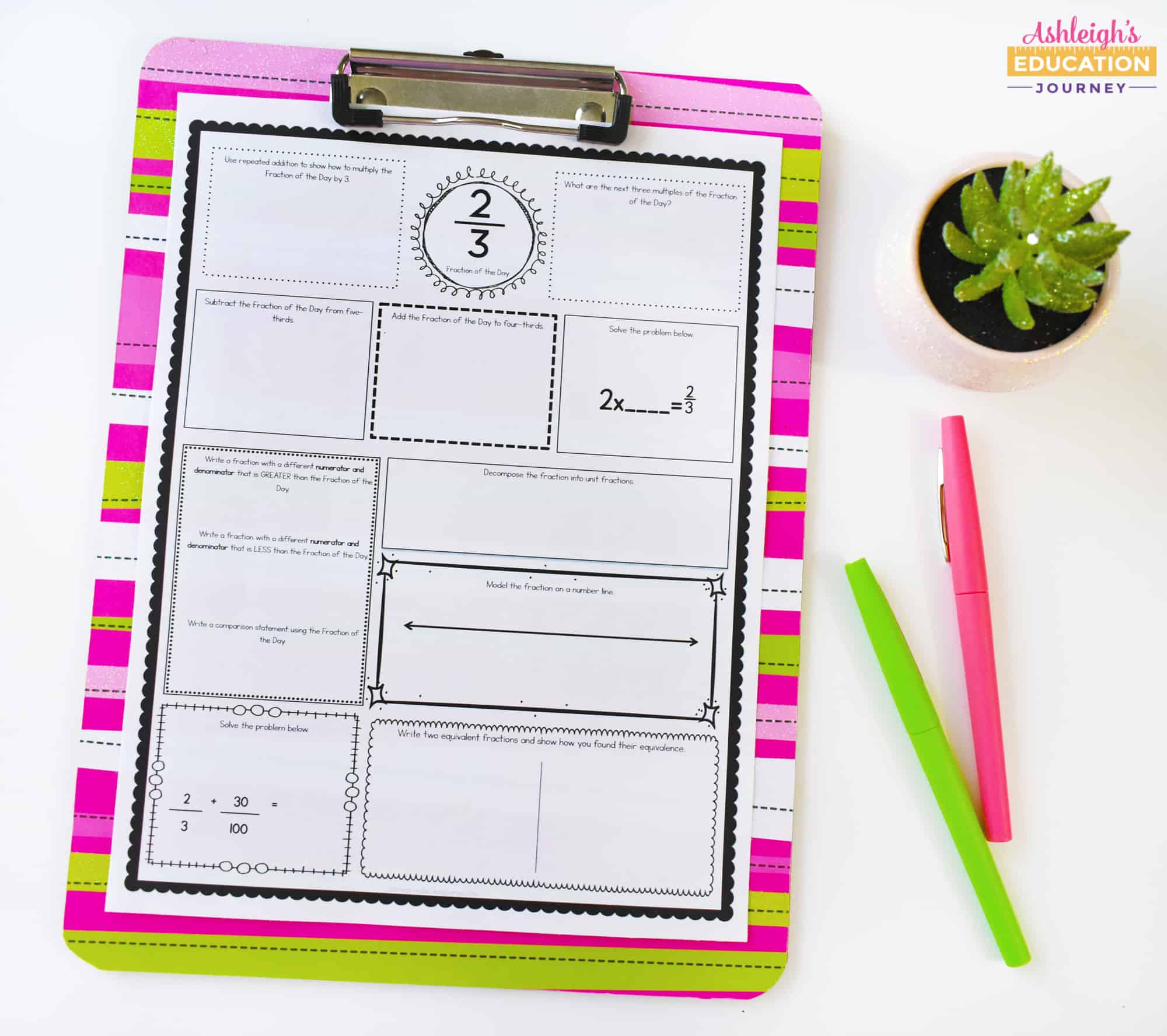
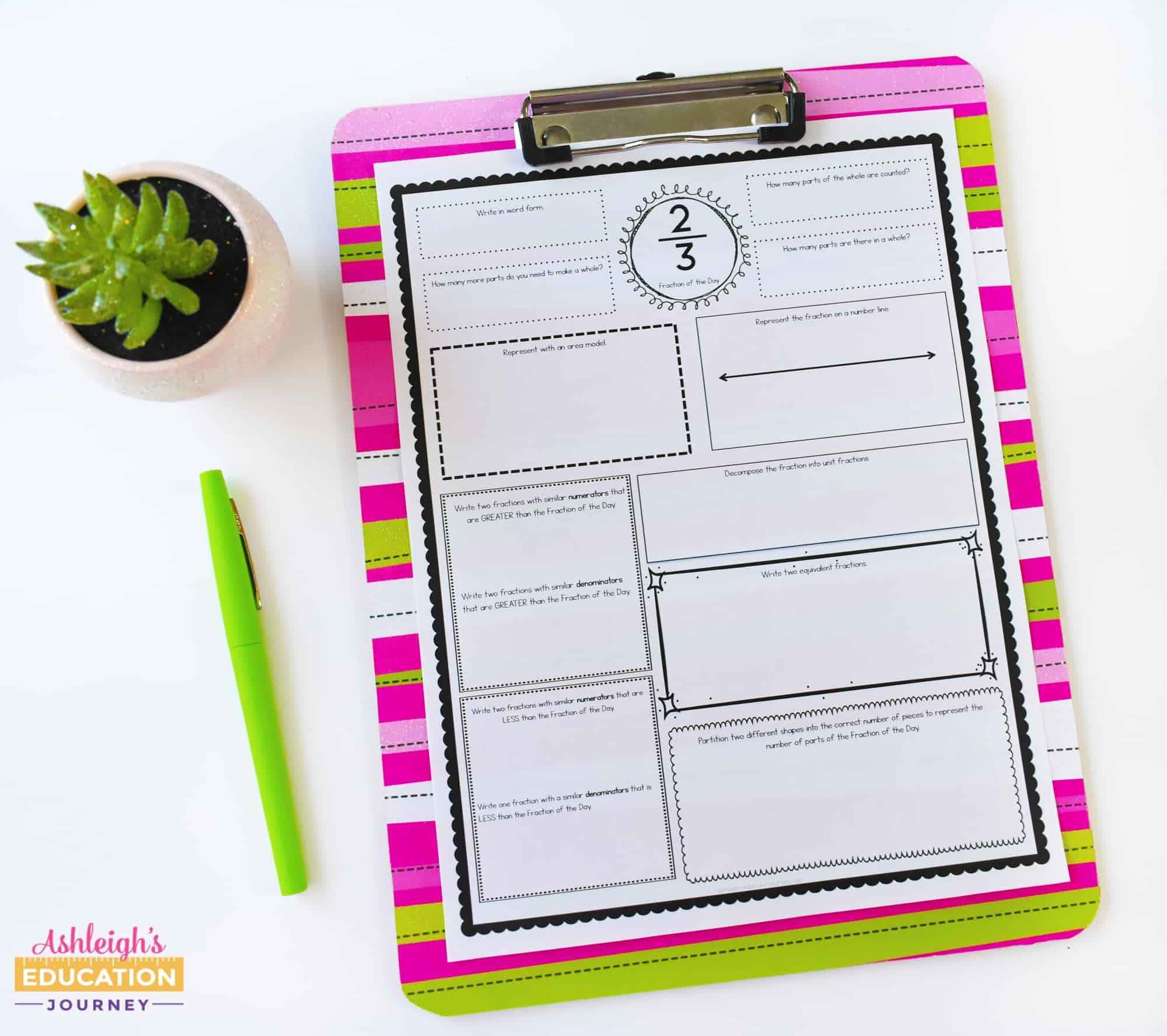
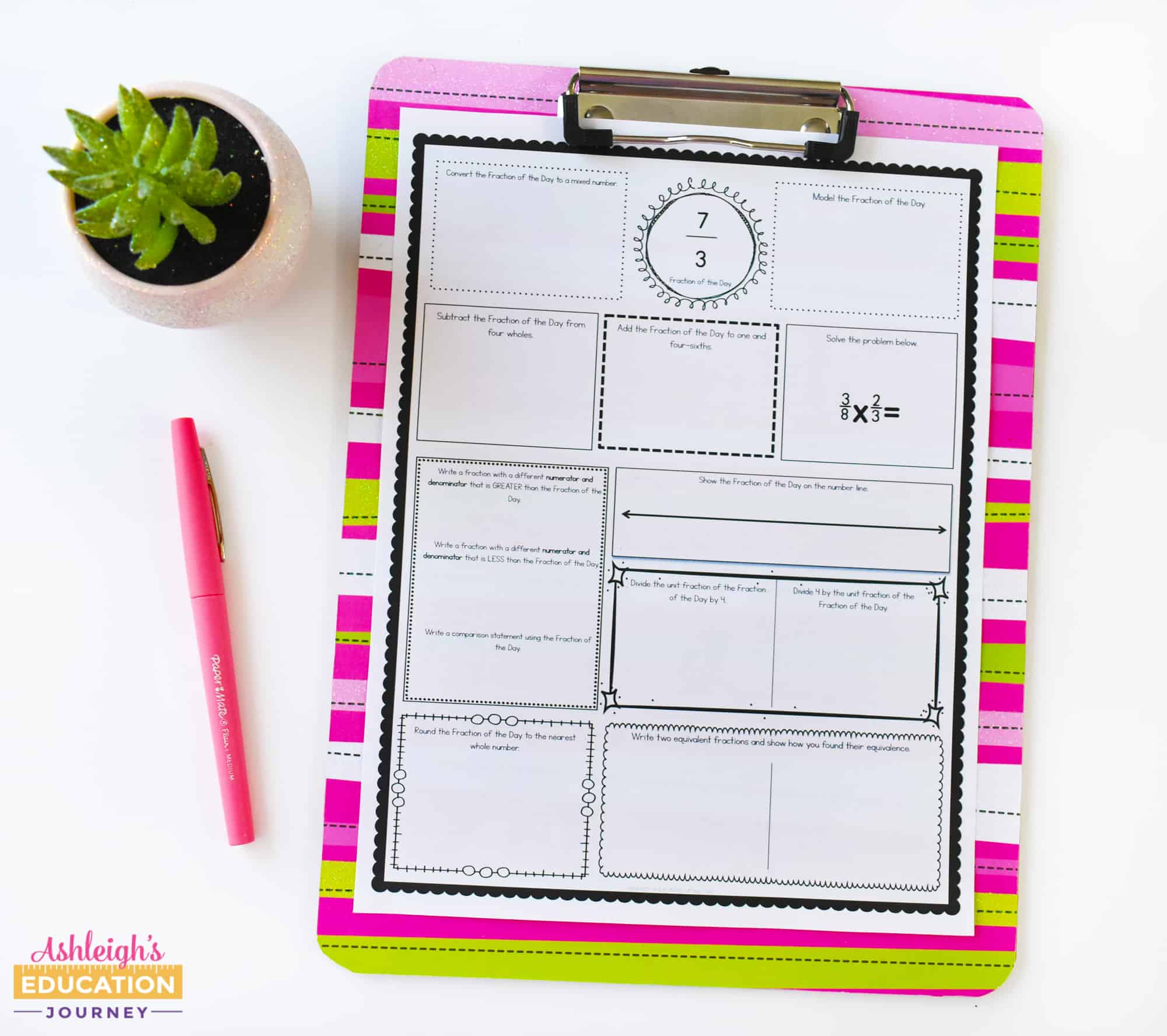
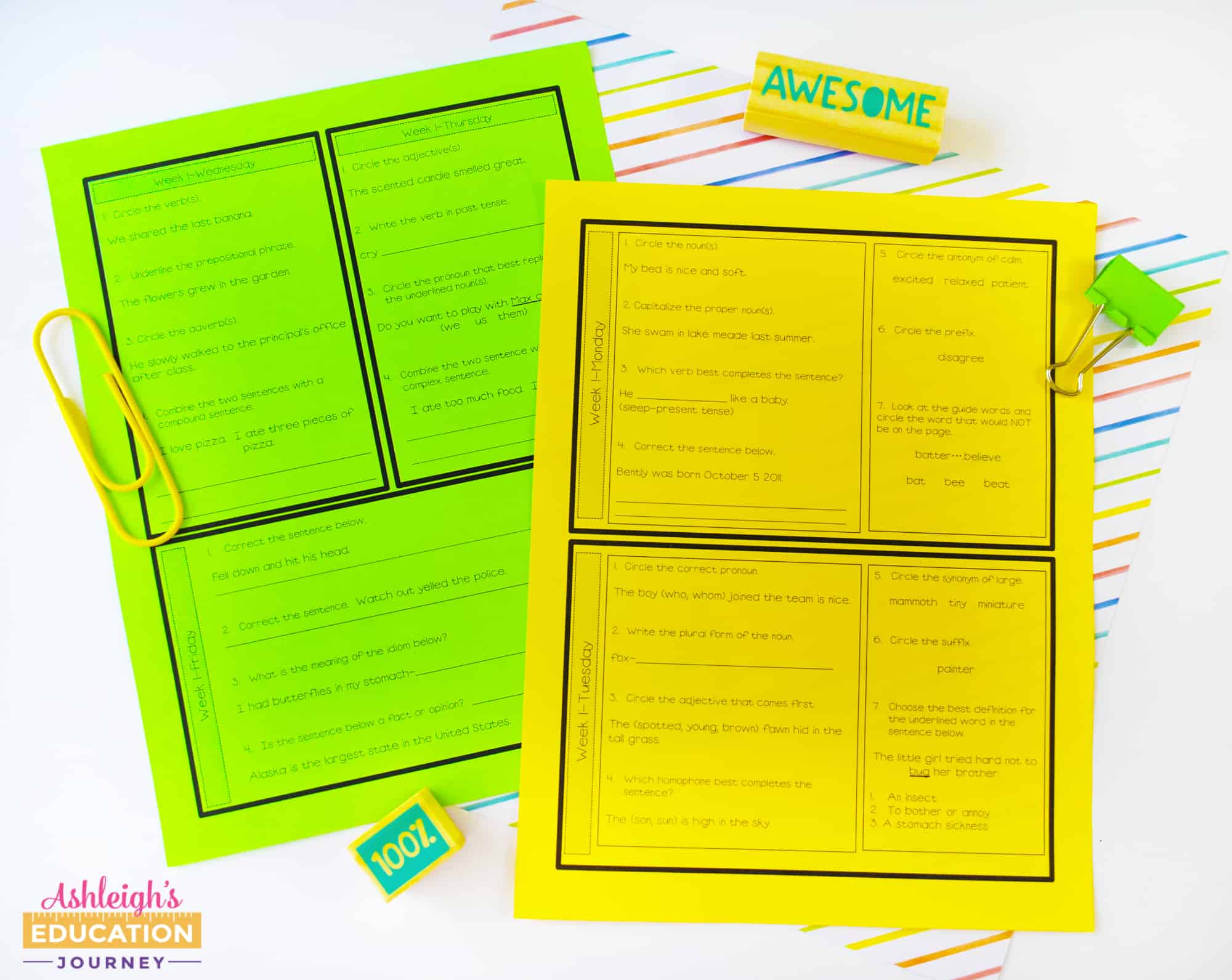
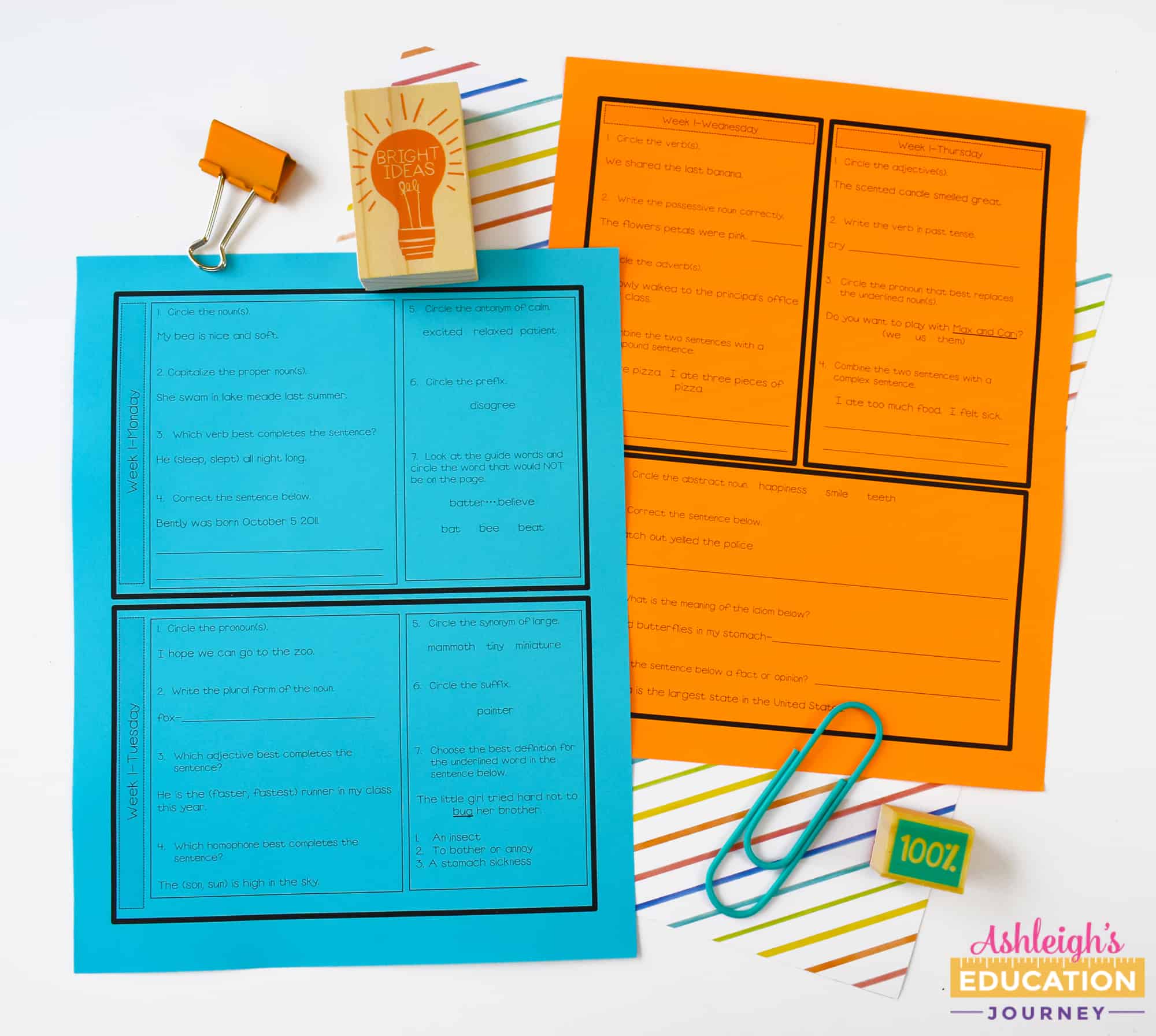


I love the idea of the morning work binder. I am teaching 3rd grade for the first time this year and wanted to do something for morning work. Now I am all set! I will be purchasing your story problems and L.A morning work pages. I believe I have your number of the day packet from when I taught 4th grade a few years ago.
Just a few quick questions. When do you go over the answers from the morning work and do you put all of their pages in the binder at one time?
Thank you! Ideally, I would go over morning work about 10 minutes after our morning announcements. Last year, I had our specials class right after announcements, so I had to wait for students to return. I do put all of the pages in the binder at one time. I just do that to save me time during the year. It’s really not necessary.
Hi! I have bought a bunch of your supplies from TpT– love them, but I have a few questions. When you talk about this work for morning work, how much time are you giving students to complete them? I usually have students who are really high in fourth grade and a group of about 6 that are really low. Would you pull the low students back to work on the morning work together, allow them to try to persevere through it, or have them complete what they can while waiting for the review?
Also, place value is the first unit that we cover, but we don’t talk about Area and Perimeter, which I believe was on the bottom of the math morning work. Do you use that as a challenge for those that are ready or do you expect them to figure it out before reviewing area and perimeter? I am wondering the same thing for the language arts — if it is something that students struggle on, how do you go about it?
One more question.. In their binders, do you have each part sectioned off for math word problems, language arts, and then number of the day. Do you clean the binders out monthly?
Looking forward to hearing from you 🙂
Hi there! I give students about 15 minutes to complete their morning work. I work with my low students if I have time during the morning. Sometimes I have them complete certain portions of their morning work without me, and then I help them with the rest. If the morning work is WAY too difficult, I give them a different version. There shouldn’t be any area and perimeter on their morning work, at least at the start of the year. I keep it pretty easy the first few weeks. I know the Weekly Word Problems only contain smaller addition and subtraction problems, and I start with the easiest Number of the Day.
I approach language arts a bit differently. We only complete one or two questions a day the first week, and then we add another question the following week, and so forth until we are completing the whole page, or day’s worth of questions. This seems to be a bit easier for students than jumping right in.
I have page dividers in students’ binders, and we do clean them out monthly. I go ahead and fill them up for the year during the summer, but that’s just to save me time during the year.
Let me know if you have any other questions!
I am going to buying this for next year. My question is this; do you have them do math and language arts both when they come in or just one or the other?
I am so excited to start using these. Thank you so much for putting this together and sharing.
Thank you! We do both everyday. It really doesn’t take long at all, once students have the routine established.
Hi there! I am so thankful to find your morning work bundle. These are my questions. How do you manage those students who are consistently tardy? Do you have them finish morning work at different part of the day? I have a student who comes into the classroom 10 minutes after school starts. Do you check their corrected morning work after you go over it as a class? Do you give them any points for completing it (as a responsibility grade)? What is your accountability method for those who don’t start or finish morning work? Our students trickle in between 8:15 and 8:30. School starts at 8:30. I teach 4th grade.
Thank you for your feedback!
Minnie
It really depends on the school and expectations. At my old school, I had students catch up at the start of their activity class (we had that first thing in the morning). I’m not allowed to do that in my new school. Honestly, if the student can’t help it, I don’t penalize them. However, if they just play around for thirty minutes, I’ll have them finish it at recess.
Ashleigh, Do you just go over these as a whole class? How do you know who puts in the effort to complete it and who just fills in the answers when you’re reviewing it? How are they held accountable for their work?
I do go over it with the whole class. I can typically tell who I need to watch out for quickly, so I walk around the room as we go over it and pay particular attention to those students. Also, when we go over it, they MUST use a pen to check their work. That way I can easily see who missed a problem or just didn’t do it.
Hello! I started using your math units this past school year and loved them! I just discovered that you have this as a morning work routine. Knowing that you will be teaching 3 classes this year, how does morning work look for your other classes and not your home room? Will your partner teachers be doing these pages every morning as well? I have two classes and was just curious what you thought! Thanks!
I honestly don’t know how it will work with three. There’s a good chance I’ll only do it with my homeroom, which isn’t ideal, but I want to be flexible. When I had a two way split, it all depended on the partner. My personal favorite way was to make a morning work binder that all students used in all homerooms.
I homeschool my girls and would love to have them do morning work before we start anything. I have one in 2nd grade and the other is 6th grade. do you have anything for those grades that I could purchase from you?
I”m sorry, I don’t.
Hi there! Next school year (today is the last day of my 30th year of teaching) I will be moving from 6th grade science and math to 4th grade (same subjects). I have never taught 4th grade before….I have taught 6th or 8th grade my entire career. I am so nervous! Your bell work binders look amazing and I can’t wait to incorporate them into my routine next year!
Thanks so much! Enjoy your summer!
Susan from SW Louisiana